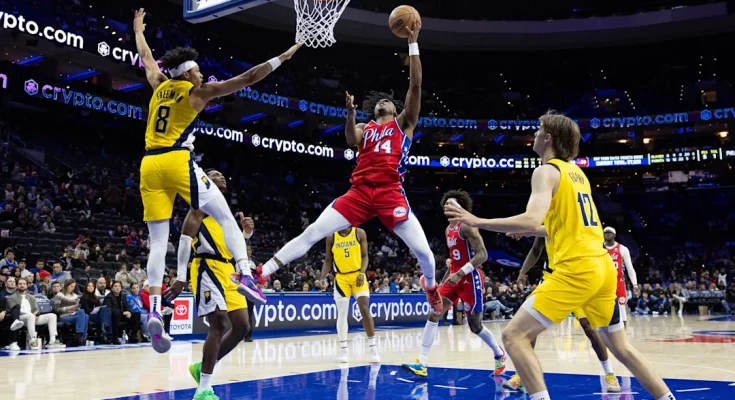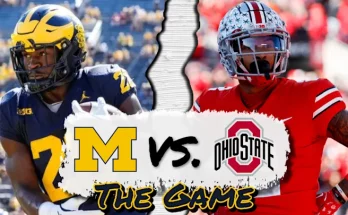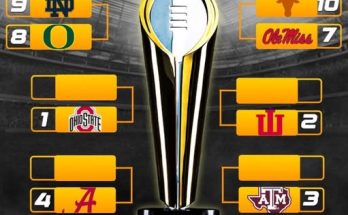In the fast-paced world of professional basketball, surprises come often, but the recent waiver of a former Indiana Pacers forward still sent shockwaves through NBA circles. The player, once heralded for his versatility and impact on both ends of the court, found himself unexpectedly cut from the roster, leaving many analysts and fans questioning what went wrong. Now, after a whirlwind of rumors, speculation, and waiting, the forward has found a new home—one that could offer the revival he needs and the depth another team has been searching for. While it’s a chapter closed in Indiana, it’s the beginning of something potentially powerful elsewhere.
The forward in question, known for his gritty playstyle, tough perimeter defense, and ability to stretch the floor, carved out a meaningful role during his time with the Pacers. Though not a star in the traditional sense, he embodied the modern archetype of the utility forward—able to guard multiple positions, knock down the corner three, and serve as a glue guy in the locker room. That’s why his release came as such a surprise. While Indiana has been pivoting toward youth and restructuring their roster to better fit the vision of head coach Rick Carlisle and the emergence of All-Star guard Tyrese Haliburton, waiving a dependable contributor was still a puzzling move.
Sources close to the situation suggested that the decision had more to do with financial flexibility and the team’s commitment to giving more minutes to younger forwards such as Jarace Walker and Ben Sheppard. The front office’s emphasis on development and long-term sustainability in a competitive Eastern Conference may have made the veteran forward expendable in their eyes. Even so, the abrupt nature of the move did not sit well with everyone within the organization. Some teammates reportedly expressed surprise and disappointment, citing the forward’s strong locker room presence and consistent effort.
While the NBA is often described as a business—and rightfully so—moves like these serve as a reminder of the human element often lost in transactional headlines. The waived player didn’t publicly complain or lash out. Instead, he thanked the organization and fans through a social media post that highlighted his gratitude for the opportunity and his excitement for what’s next. That kind of maturity and grace under uncertainty may have been exactly what attracted his new team.
The forward’s next destination is a team that has been quietly building a contender in the Western Conference. While not a top-tier favorite, this franchise has made notable moves in recent years to create a roster that is both exciting and competitive. Injuries and inconsistencies have held them back from reaching their full potential, but the addition of a seasoned, defense-first player might be the kind of subtle boost they’ve needed. The new team wasted no time, quickly offering the forward a one-year deal with a player option—a show of faith that also gives both sides flexibility moving forward.
From a basketball standpoint, the move makes sense for both parties. The team acquires a player who can immediately slot into their rotation, offering defensive versatility on the wing, toughness in the post, and a steady veteran presence in high-pressure moments. The forward, meanwhile, joins a roster filled with rising stars and savvy veterans, presenting him with a chance to make a playoff push and reestablish his value in a system that appreciates his skillset. Analysts have already started projecting how the new signing will fit into the team’s schemes, noting that his off-ball movement, rebounding, and communication on defense are sorely needed assets.
What makes this story even more compelling is how it reflects the often unpredictable and cruel nature of professional sports. One moment, you’re a trusted role player with a guaranteed contract; the next, you’re suddenly out of a job and hoping for another chance. It’s a harsh reality that many players face but few talk about publicly. The difference between staying employed and being cut can come down to cap management, fit, coaching preference, or even locker room politics. That the forward was able to quickly rebound and land in what many would call an ideal situation is a testament to both his talent and reputation.
Behind the scenes, the player’s agent reportedly worked the phones aggressively following the waiver, identifying teams that had a need at the forward spot and cap space to make a deal. The market wasn’t flooded with options, but the right fit finally came along. The front office of the new team was intrigued not just by the player’s numbers but by the intangibles he brings—leadership, toughness, professionalism. This wasn’t a desperation signing, but a calculated decision based on how the forward could elevate a locker room culture and contribute meaningful minutes.
Now, the challenge will be proving that the Pacers made a mistake. Motivation won’t be hard to find. Already known as a competitor who plays with a chip on his shoulder, the forward will no doubt use this chapter as fuel. In the early stages of training camp, he’s expected to compete for a rotational role, though insiders believe he may quickly rise to become a trusted contributor off the bench or even sneak into the starting lineup depending on matchups. His new coach praised his “NBA readiness” and called him “a player who understands winning.”
Fans of the new team are cautiously optimistic. Social media reactions to the signing ranged from enthusiastic to skeptical, but most acknowledged the value of a low-risk, high-reward addition. Some pointed to his previous playoff experience, noting how valuable that could be when the stakes get higher in April and May. Others recalled how he performed in big moments with the Pacers, especially against top-tier competition. There’s a belief that in the right role, with the right motivation, he could be one of the sleeper pickups of the offseason.
It’s worth reflecting on how this journey speaks to the nature of longevity in the NBA. Players must constantly evolve to stay relevant. The forward adapted his game over the years, becoming a more consistent three-point shooter and expanding his ability to guard multiple positions. That kind of self-awareness and willingness to improve doesn’t always show up in box scores, but coaches and executives notice it. It’s what kept him in the league this long, and it’s what will likely keep him around for years to come.
Even so, it’s impossible to ignore what was lost in Indiana. The Pacers lose a player who may not have been a household name but whose contributions were respected and reliable. Chemistry is fragile in the NBA, and removing a steady presence can have unintended consequences. Whether the decision pays off long-term for Indiana remains to be seen, but the move signals a clear pivot toward youth and potential over experience and steadiness. It’s a gamble that might open the door for new stars to emerge—but also one that could backfire if leadership becomes an issue or depth is tested.
The forward, for his part, appears unfazed by the drama. In a recent interview, he expressed gratitude for the journey and excitement for what lies ahead. He noted that he still feels he has “a lot left in the tank” and is motivated to “help this team win however I can.” It’s the kind of mindset that not only endears a player to fans but also makes him a coach’s dream. Whether logging 10 minutes or 30, starting or coming off the bench, the forward seems ready to embrace his new role wholeheartedly.
As the NBA season approaches, all eyes will be on how he integrates into his new team. Will he become a surprise difference-maker, a fan favorite, a crucial piece in a deep playoff run? Or will his stint be a footnote in an already impressive career? The story is still being written, but one thing is clear—this forward isn’t done yet. After being waived in what many viewed as an unfair move, he now has a chance to show the basketball world why he belongs. And if history is any indication, he’s not one to waste an opportunity.



